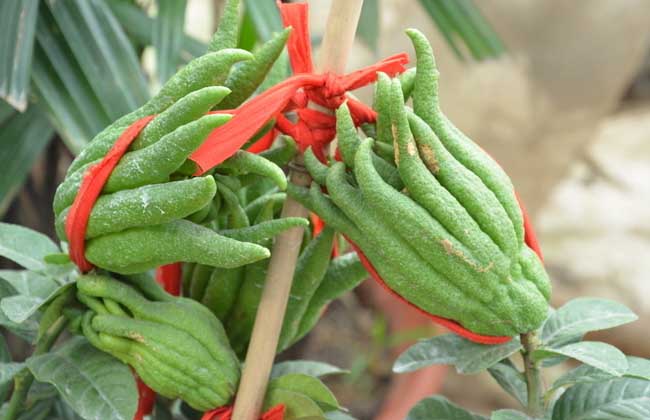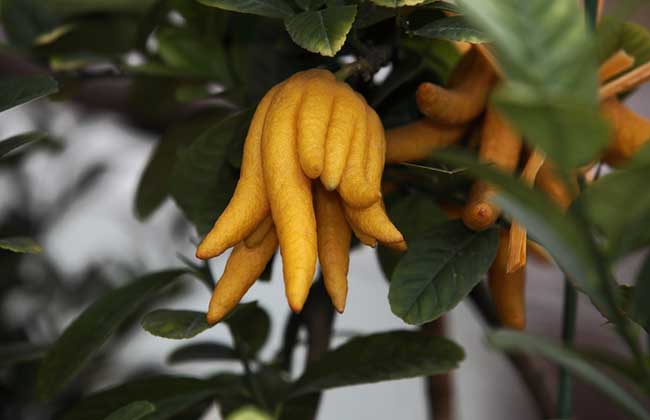How much is a bergamot bonsai?

Bergamot, also known as bergamot, five-finger orange, five-finger orange, etc., are shrubs or small trees of the genus Citrus in Rutaceae. When the carpels are ripe, they are separated to form slender, curved petals, such as fingers, and are usually used as traditional Chinese medicine. But its peculiar fruit shape is also often used as an ornamental plant. Let's take a look at how much a bergamot bonsai costs.
How much is the bergamot bonsai?
The price of bergamot bonsai ranges from a few pieces to a few hundred yuan, mainly depending on the size of the bonsai and the price of the fruit. The ornamental value of bergamot bonsai is very high, the flowers are white, fragrant and open in clusters, which is very lovable. To the fruit ripening period, the shape of the fruit is like finger shape, clenched fist shape, fist finger shape, hand shape, hand shape, like human hands, lifelike. Moreover, mature bergamot can always overflow fragrance, eliminate odor, purify indoor air, inhibit bacteria, and hang fruit for a long time, for 3-4 months, or even longer, for long-term viewing.
Culture method of bergamot bonsai
1. Soil: bergamot likes acidic soil, and the pH value should be kept at 5.3. The ratio of basin soil is humus soil 60%, river sand 30%, peat soil or furnace ash 10%. Thin fertilizer and water can be applied every ten days and a half month. The water is big and the root is easy to rot, so we should try the method of moisture watering. The surface of the basin soil is not dry and not watered at a time, so it is the case all year round.
2. Fertilization: bergamot has luxuriant branches and leaves, evergreen four seasons, large fruit and needs a lot of fertilizer. Apply rotten cake fertilizer in early spring and rotten liquid fertilizer every 10 days and half a month. Phosphate fertilizer is the main fertilizer during flowering to promote flower bud differentiation. Before the beginning of winter, apply a thick fertilizer, irrigate once through water, and then use stable compost and compost to back up the soil to ensure a safe winter.
3. Watering: bergamot likes to be wet, but is most afraid of stagnant water. Too wet soil or stagnant water at the bottom of the basin will cause root system mildew and rot. Bergamot is sensitive to water requirements from flowering to ripening stage, during which excessive watering is easy to rot roots, flowers and fruits. If the pot soil is too dry, it is easy to make the pedicel and fruit stalk detached and fall off, so the potted bergamot soil should not be dry or wet.
4. Pruning: after the bergamot flower is put on the pot, it begins to grow mainly with vegetative growth, and the terminal bud grows continuously without self-shearing, so we should pay attention to coring the main shoot of bergamot, promoting branching, dwarfing the crown, thinning and cutting the weak branches. After bergamot fruiting, the buds were wiped in spring and summer according to the growth and fruiting potential, and the top tips of the branches were plucked, flowers and fruits were thinned, which promoted the balance of shoots and fruits in each stage, and prevented the phenomenon of big and small years.
5. Picking flowers: the flowers of bergamot blooming from April to early June are mostly unisexual flowers on the autumn shoots of last year, which cannot bear fruit and should be removed completely. The flowers blooming on the spring shoots of the same year before and after the end of June are mostly bisexual flowers, which can bear fruit. Each short branch can leave 1-2 flowers, and the rest can be thinned to promote it to grow into big fruit. During the period of bergamot blooming and fruiting, attention should also be paid to erasing the new buds sprouting on the dry branches to prevent fruit drop.
Matters needing attention of bergamot bonsai
1. Bergamot likes warm, humid, sunny environment, not resistant to cold, afraid of frost and drought, and is suitable for cultivation in areas with sufficient rainfall and no freezing in winter.
2. The most suitable humidity for bergamot is 70-90%. You should spray water to the leaves once or twice a day in the dry season, or you can sprinkle water to the ground to increase air humidity.
3. The suitable temperature of bergamot is 15: 30 ℃. Move to a cool, ventilated and shady place in high temperature season, and keep out cold when the temperature is below 5 ℃.
4. Bergamot is not easy to set fruit, so we should use various ways to promote it. Organic fertilizer should be applied in bud, before and after flowering, and thin organic liquid fertilizer should be applied once a week. Then thinning buds, abnormal buds, sick weak buds must be broken, can not leave too many buds, can only stay near the top of the branch growing the best two or three buds, can not ask to set too much fruit.
5. Bergamot is prone to yellow leaf disease and leaf shedding, which can be irrigated with 1% ferrous sulfate solution. If the rotten root should be turned over immediately, the plant should be removed from the basin to wash the root, get rid of the rotten root, and be planted in sterilized plain sandy soil for maintenance so as to gradually restore its vitality.
Related
- A course of planting techniques and methods on how to grow carrots
- How to plant the latest tulips?
- Is it better to pick tea in the morning or in the afternoon? When is the best time for tea to be picked? what is the third or fifth tea?
- Launch Yuanxiao Happy combination Haocha + Tea Yuan healthy Taste
- Penghu Tourism "Fireworks 20 Parade with You"
- 2022 West Lake Happiness holds "Digital Revitalization Voucher" and draws iphone13 and laptop.
- Banqiao Fuzhou social houses are designed to change start-up combined with police elimination to create a safe and livable environment
- The convenient measure of "mechanical weeding" in Xinbei has been abused and the Agriculture Bureau has imposed heavy penalties on the illegal land consolidation.
- Changgeng University Joins Hands with Four Memory Factories to Rescue Memory Talent Shortage
- The list of Taiwan's top 100 MVP managers is listed by the Director-General of the Farmers' Association of Sanxia District.



